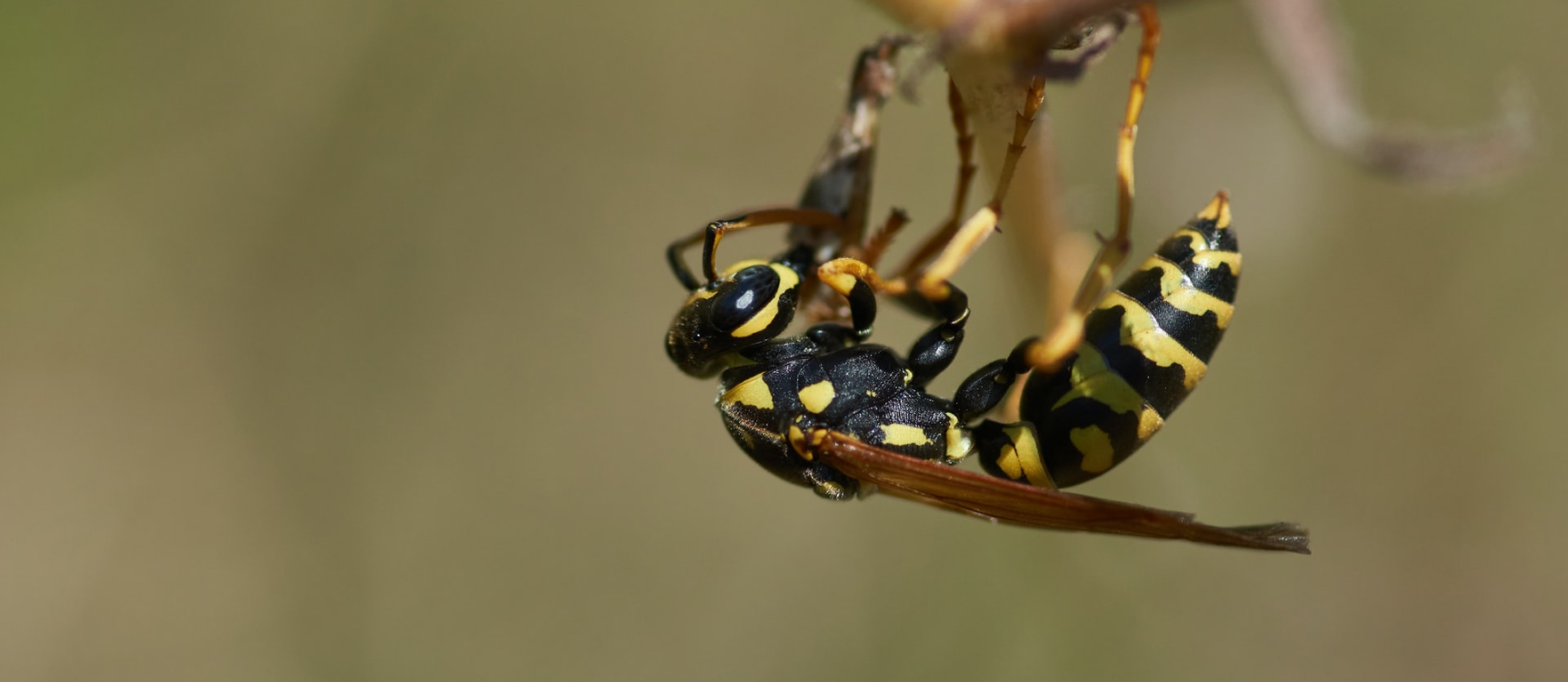Pest Info /
Wasps
Wasps looks a little like bees - and yes, they pack a nasty sting. The European wasp Vespula germanica is native to Europe, North Africa and temperate Asia. Australian records show that European wasp first reached Tasmania in 1959. It was not until 1977 that the European wasp was first recorded on the mainland in Melbourne.
About a year before the European wasp reached Tasmania, the English wasp Vespula vulgaris was recorded in the eastern suburbs of Melbourne. It is a close relative of the European wasp with very similar colour markings and may be considered as the same. However, the English wasp has not enjoyed the same success as the European wasp and has only spread to the eastern parts of Melbourne and Gippsland.
At present, the European wasp distribution appears to be restricted to the cool and wet climates of coastal southern Australia. It occurs throughout most of Victoria and Tasmania. In country New South Wales, nests have been located at Coonabarabran while several nests have been recorded in south-east Queensland. In South Australia, the European wasp is well established throughout the hills surrounding Adelaide and Adelaide itself. And in Western Australia, it has been recorded from Perth and Albany.
Unfortunately, the European wasp is here to stay. Eradication of this pest is no longer an option. Despite early reports labelling it as a 'Killer Wasp', no human deaths have been recorded in Australia. The best defence we have against this nuisance is to take precautions when eating and playing outside.
Source: Wasps by Museum Victoria
Copyright © 2012-2021 BumbleBee Pest Control Pty Ltd (ABN: 63 154 998 937)
